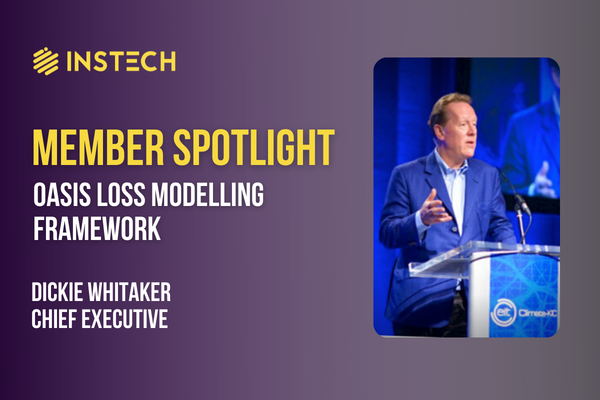Member Spotlight: Oasis Loss Modelling Framework
Why did you set up the Oasis Loss Modelling Framework?
In 2012 I founded Oasis, a not-for-profit, open-source catastrophe modelling platform. It was created to increase the model choice for the insurance and reinsurance industry, whilst democratising risk for developing countries. Oasis’ other aims include reducing costs to the industry, increasing innovation, supporting academics and reducing the barriers to entry for firms that want to get their models used within the insurance industry.
What types of organisations use the Oasis platform?
The Oasis platform is used by three main groups. The first is the independent model developer community, which includes companies such as Fathom, JBA and CoreLogic. They use Oasis as it offers an economic way to deploy their models to customers and potential clients. Insurers, reinsurers and brokers use the Oasis Platform to access these models efficiently. The third core user group is governments of low-income countries.
As a not-for-profit company, how is Oasis funded?
Oasis and the platform’s development is funded via a member subscription fee. We also take a 10% commission of any model licensed via the Oasis platform.
Lots of traditional catastrophe models are hosted on the platform. Are there any climate-conditioned models?
There are 18 model providers on the platform that offer over 200 models between them, some of which are climate-conditioned. Oasis hosted one of the first available climate-conditioned models back in 2020. The model was produced by the Potsdam Institute, the German national climate institute, and covers the whole of the Danube basin. There are various other climate-conditioned models available on the platform, including those developed by JBA and Fathom.
What work is Oasis doing in open data standards?
In addition to the platform that we provide, Oasis also curates a set of open data standards for the insurance industry. We currently have standards on property and liability exposure, but we’re working on cyber and most likely marine afterwards. Oasis also has open standards for results, which are important for combining results from different models and platforms.
Why are open data standards important for the insurance industry?
Open standards are a way of improving interoperability and efficiency in the industry. It avoids the costs and complexity that comes with multiple schemas from different model providers, all doing slightly different things.
How can Oasis be used to help create parametric insurance products?
A risk modelling tool funded by the Insurance Development Forum, IDF Oasis Risk Explorer, has recently been launched. The tool is intended to be an entry point for non-specialists interested in disaster risk financing, focused on parametric risk transfer. The tool aims to help create products for vulnerable and low-income countries. It currently models tropical cyclone risk but we intend for it to cover more perils by November 2022.
What else is Oasis working on across the rest of 2022?
Oasis is in the final stages of testing our Enterprise Oasis software. Once released, it will allow Oasis users to have a fully distributable platform. Running a complex model on a large portfolio can take up to an hour. Enterprise Oasis allows that work to be distributed over multiple machines in the cloud, reducing the process down to a few minutes. We are also working on our first cyber model and a climate-conditioned US hurricane model.
Why has Oasis joined InsTech as a corporate member?
We think it’s important to use connections to help solve problems that the industry faces. InsTech’s extensive network enables us to meet potential users of the Oasis platform, as well as potential beneficiaries of the Oasis community.
What types of companies would Oasis like to connect with?
We would like to connect with companies that are interested in using the Oasis platform as a route to market, as well as those that would like to use our open data standards. We are also interested in meeting organisations that could offer a service around the platform.
How can our readers interact with Oasis?
We have a GitHub page which has our software on it along with lots of documentation. On our website we also have further documentation and videos to help people understand Oasis. Contact details for the core management team are in both of these places.


